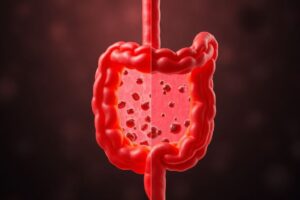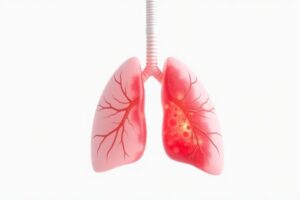Introduction
Many women struggle with unexplained fatigue, stubborn weight gain, and mood swings — and often assume it’s “just thyroid problems.”
But what if your thyroid imbalance isn’t starting in your thyroid at all… but in your hormones?
One of the most overlooked causes of thyroid dysfunction in women is estrogen dominance — a condition where estrogen levels are high relative to progesterone.
This imbalance can disrupt thyroid hormone conversion, slow metabolism, and make you feel tired no matter how much you rest.
In this article, we’ll explore the link between estrogen dominance and thyroid issues, how to recognize the signs, and the best natural ways to bring both hormones back into harmony.
🧠 What Is Estrogen Dominance?
Estrogen dominance occurs when there’s too much estrogen compared to progesterone — even if your estrogen levels are technically within a “normal” range.
This relative imbalance can develop for many reasons, including stress, diet, toxin exposure, and even certain medications.
Common Causes:
- Chronic stress (lowers progesterone production)
- Poor liver detoxification (estrogen isn’t properly metabolized)
- Exposure to xenoestrogens (synthetic estrogens found in plastics, pesticides, and cosmetics)
- High body fat percentage (fat cells produce additional estrogen)
- Birth control pills or HRT (introduce external estrogen sources)
When estrogen levels rise unchecked, they can interfere with thyroid hormone production and utilization — leading to the frustrating symptoms many women experience.
🔄 How Estrogen Affects Thyroid Function
Estrogen and thyroid hormones are tightly interconnected. Here’s how excess estrogen can throw off your thyroid balance:
1. Reduced Thyroid Hormone Conversion
Estrogen dominance can impair the conversion of T4 (inactive thyroid hormone) into T3 (active thyroid hormone).
Without enough T3, your metabolism slows down — leading to fatigue, cold hands and feet, and stubborn weight gain.
2. Increased Thyroid-Binding Globulin (TBG)
High estrogen increases a protein called thyroid-binding globulin, which “locks up” thyroid hormones, making them unavailable to your cells.
Even if your blood tests look normal, your tissues may not be getting enough thyroid hormone — a condition often called “functional hypothyroidism.”
3. Disrupted Pituitary-Thyroid Feedback Loop
Excess estrogen can disrupt communication between your pituitary gland and thyroid, leading to irregular hormone signaling and sluggish thyroid response.
⚠️ Signs You May Have Both Estrogen Dominance and Thyroid Imbalance
Because these two systems influence each other, symptoms often overlap.
If you experience multiple signs below, it’s worth investigating both your thyroid and estrogen balance:
| Estrogen Dominance Symptoms | Thyroid Imbalance Symptoms |
|---|---|
| Bloating and water retention | Persistent fatigue |
| Breast tenderness or cysts | Cold intolerance |
| Heavy or irregular periods | Weight gain, especially around the waist |
| Mood swings, anxiety | Brain fog or poor memory |
| PMS symptoms | Dry skin and hair loss |
| Difficulty losing weight | Low libido |
Many women are misdiagnosed with “just hypothyroidism” — when in fact, the root issue is estrogen overload suppressing thyroid performance.
🩺 The Estrogen-Thyroid Feedback Cycle
Once estrogen dominance begins, it can create a vicious cycle:
- High estrogen raises thyroid-binding globulin → less free thyroid hormone.
- Reduced thyroid function slows liver detox → estrogen builds up even more.
- Excess estrogen further suppresses thyroid conversion and signaling.
Over time, this cycle can worsen both conditions — making it harder to lose weight, stay energized, and feel emotionally balanced.
🍎 Natural Strategies to Rebalance Estrogen and Support Thyroid Health
You can restore hormonal harmony naturally by supporting detoxification, balancing nutrition, and calming stress hormones.
1. Support Liver Detox
Your liver helps process and clear excess estrogen from the body.
- Eat cruciferous vegetables (broccoli, kale, cauliflower, Brussels sprouts).
- Add lemon water and beetroot for gentle liver support.
- Avoid alcohol and processed sugar.
For a deeper dive, see Foods That Harm Thyroid Health (and What to Avoid).
2. Boost Progesterone Naturally
- Get 7–8 hours of quality sleep.
- Manage stress with meditation or gentle yoga.
- Eat zinc-rich foods (pumpkin seeds, seafood) and vitamin B6 sources (chicken, bananas).
These nutrients support progesterone production, helping offset estrogen dominance.
3. Reduce Xenoestrogen Exposure
- Use glass or stainless steel instead of plastic containers.
- Choose paraben-free and phthalate-free skincare products.
- Wash fruits and vegetables to remove pesticide residues.
4. Support Thyroid Function
- Ensure adequate iodine, selenium, and zinc intake for hormone synthesis.
- Include sea vegetables, Brazil nuts, and eggs in your diet.
- See 10 Essential Vitamins and Minerals for a Healthy Thyroid for a full list.
5. Exercise for Hormone Balance
Moderate physical activity (walking, cycling, Pilates) helps reduce excess estrogen and stimulate thyroid activity.
Check out: Exercise Tips for Balancing Thyroid Hormones.
6. Consider Adaptogenic Herbs
Herbs like ashwagandha, rhodiola, and maca help support adrenal and thyroid balance while reducing stress-driven hormone fluctuations.
You can learn more in Balancing Thyroid and Adrenal Fatigue Naturally.
🧘 Lifestyle Tips for Ongoing Hormone Harmony
- Eat a high-fiber diet: Helps eliminate excess estrogen via the gut.
- Stay hydrated: Water supports detox and hormonal transport.
- Avoid chronic dieting: Restrictive eating can stress the thyroid and lower progesterone.
- Balance blood sugar: Stable glucose levels prevent estrogen surges — see How Stress Affects Blood Pressure (and Natural Remedies That Work) for stress-sugar insights that apply hormonally too.
🪞When to Seek Professional Help
If you’re experiencing ongoing fatigue, weight gain, or irregular cycles despite lifestyle changes, ask your doctor about testing:
- Comprehensive Thyroid Panel: TSH, Free T4, Free T3, Reverse T3
- Estrogen and Progesterone: Measured mid-cycle for accuracy
- Liver Function Tests: To assess estrogen clearance
A holistic practitioner or functional medicine doctor can help interpret your results and create a plan that supports both hormonal systems together, not in isolation.
🌿 Final Thoughts
The connection between estrogen dominance and thyroid issues is often the missing piece in women’s health.
Balancing estrogen and progesterone can unlock better thyroid performance, faster metabolism, and a calmer mood — without relying solely on medication.
By supporting your liver, eating hormone-friendly foods, and reducing stress, you can naturally bring your body back into balance — feeling lighter, more energetic, and in tune with yourself again.
🔗 Related Articles
- Foods That Harm Thyroid Health (and What to Avoid)
- Balancing Thyroid and Adrenal Fatigue Naturally
- How to Choose the Right Thyroid Supplement for You
- Morning Habits That Support a Healthy Thyroid
Find Your Best-Fit Thyroid Supplement
Confused by iodine, selenium, ashwagandha, or “estrogen-balancing” blends? Our quick guide walks you through what to choose (and what to avoid) based on your symptoms, labs, and goals.
- Match ingredients to common patterns like estrogen dominance, low T3 conversion, or adrenal load.
- See when blends help—and when single-nutrient support is smarter.
- Evidence-linked dosages and red flags to watch for.











